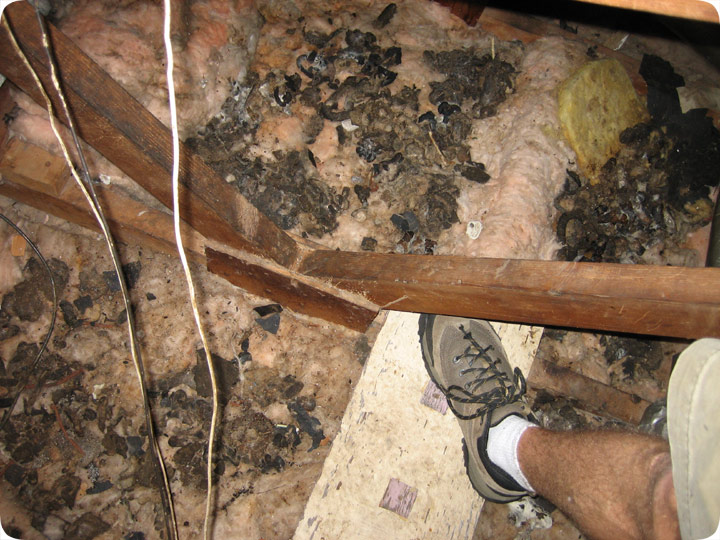Carefully remove the bag from the attic and avoid cross contaminating your home.
Raccoon droppings in attic.
If you think there s a risk of a person or pet coming into contact with the feces clean it.
Use a shovel or scoop to carefully collect the droppings and any surrounding insulation or materials.
Place them inside a heavy duty garbage bag and completely seal the top.
There s absolutely no doubt about it raccoon feces are very dangerous to touch or breathe.
The droppings and urine can act as a vector for disease such as leptospirosis salmonella infection raccoon roundworm hookworm cryptosporidiosis and more.
Same goes for urine as well.
Fresh feces are tubular in shape 7 15 cm long with blunt ends and with a similar diameter as a nickel.
Latrines may be found at or on.
Even if a raccoon poops in the swimming pool the chlorine won t kill roundworm eggs.
Personal protective equipment ppe must be worn while cleaning up after a raccoon.
Raccoons carry diseases that can be contracted by our pets and even by us.
Because raccoons are the primary host of baylisascaris procyanis a roundworm that can harm people and the roundworm eggs may be present in raccoon feces their latrines should be removed and cleaned up whenever they might pose a health hazard this the task requires extreme caution.
Most of the time raccoons have left enough droppings that this is an important step.
If you ve had raccoons living in your attic it s a good idea to have the attic cleaned.
To remove the feces from your attic.
Raccoon feces usually are dark and tubular and have a pungent odor.
While most raccoon feces are dark in color this can change depending on the animal s diet.
Trees around the base and at forks raised horizontal surfaces such as fallen logs stumps woodpiles or large rocks decks or patios attics garages cs222686.
When animals live in your attic they always defecate and urinate and they may leave a big mess behind.
If you have a raccoon infestation in your attic or anywhere else on your property you will be able to clearly see their toilet too.
Avoid tearing the bag and double bag if needed.
Sometimes there s a specific raccoon latrine and most of the poop is piled up in one spot.
Raccoons often leave their feces in communal sites called latrines.
How to get rid of raccoon droppings in the attic the best approach is a full cleanup with either vacuuming of feces or insulation removal and fogging of the attic with a special enzyme cleaner.
Restoration personnel may be called on this kind of job to treat the odor of the feces or clean up a raccoon inhabited basement or attic.
Raccoons leave their waste behind when they inhabit an attic.
Sometimes it s spread out all over the attic.

